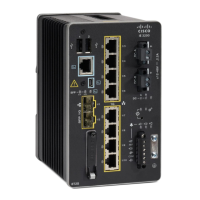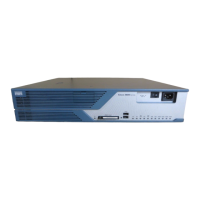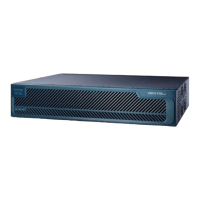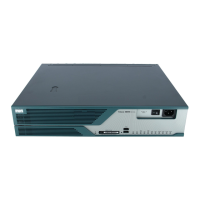7-5
Cisco 3200 Series Router Hardware Reference
OL-5816-10
Chapter 7 Managing Firmware and Configurations
Working with the Flash File System
For specific examples of using the copy command with configuration files, see the “Working with
Configuration Files” section on page 7-7.
To copy software images either by downloading a new version or uploading the existing one, use the
archive download-sw or the archive upload-sw privileged EXEC command. For more information, see
the
“Working with Software Images” section on page 7-18.
Deleting Files
When you no longer need a file on a flash memory device, you can permanently delete it. To delete a file
or directory from a specified flash device, use the delete [/force] [/recursive] [filesystem:]/file-url
privileged EXEC command.
Caution When files are deleted, their contents cannot be recovered.
Use the /recursive keyword for deleting a directory and all subdirectories and the files contained in it.
Use the /force keyword to suppress the prompting that confirms a deletion of each file in the directory.
You are prompted only once at the beginning of this deletion process. Use the /force and /recursive
keywords for deleting old software images that were installed by using the archive download-sw
command but are no longer needed.
If you omit the filesystem: option, the WMIC uses the default device specified by the cd command. For
file-url, you specify the path (directory) and the name of the file to be deleted.
This example shows how to delete the file myconfig from the default flash memory device:
bridge# delete myconfig
Creating, Displaying, and Extracting tar Files
You can create a tar file and write files into it, list the files in a tar file, and extract the files from a tar
file as described in the next sections.
Creating a tar File
To create a tar file and write files into it, use the following command in privileged EXEC mode:
archive tar /create destination-url flash:/file-url
For destination-url, specify the destination URL alias for the local or network file system and the name
of the tar file to create. These options are supported:
• For the local flash file system, the syntax is
flash:/file-url
• For the File Transfer Protocol (FTP), the syntax is
ftp:[[//username[:password]@location]/directory]/tar-filename.tar
• For the Remote Copy Protocol (RCP), the syntax is
rcp:[[//username@location]/directory]/tar-filename.tar
• For the Trivial File Transfer Protocol (TFTP), the syntax is
tftp:[[//location]/directory]/tar-filename.tar
The tar-filename.tar is the tar file to be created.

